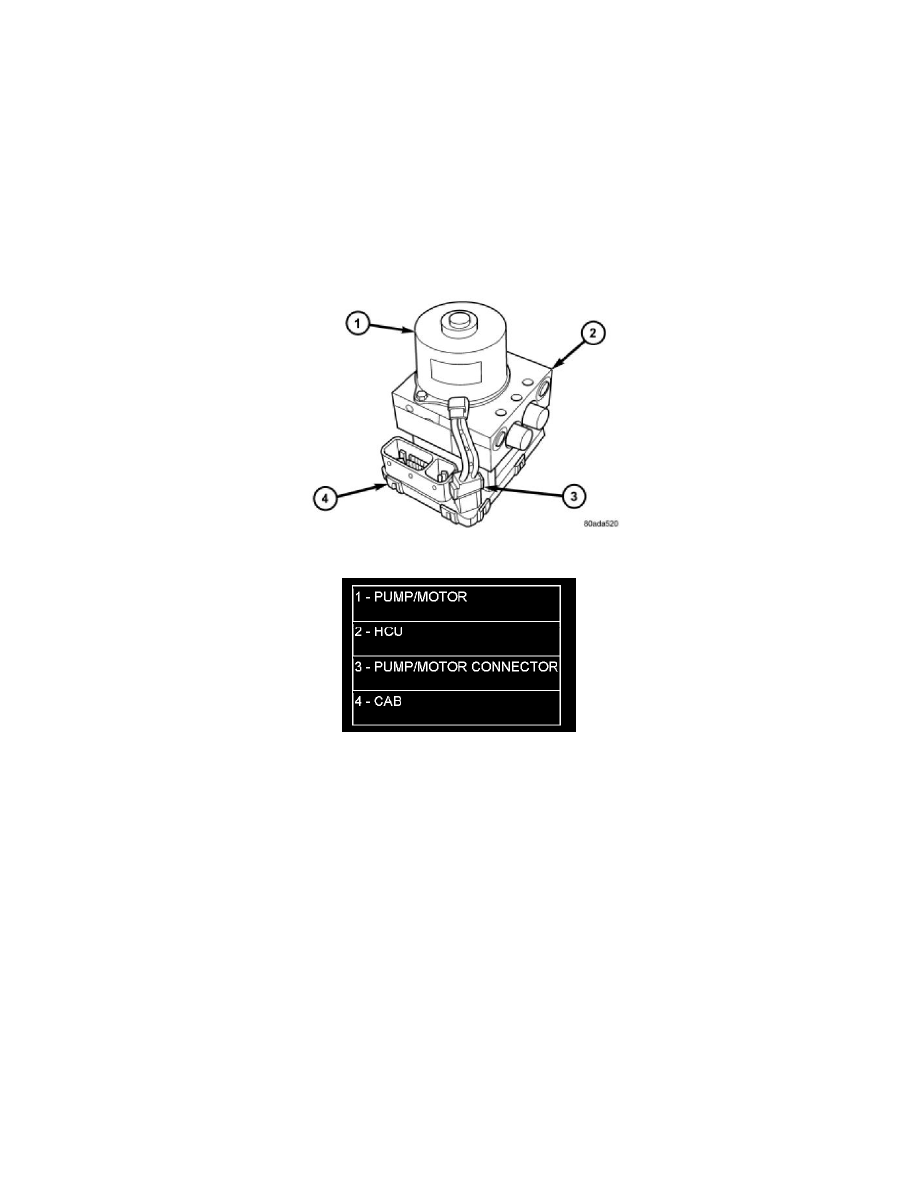Grand Caravan V6-3.3L VIN E Flex Fuel (2007)

Electronic Brake Control Module: Description and Operation
Controller Antilock Brake (MK20E)
Description
DESCRIPTION
NOTE: This system is only used on right-hand-drive (RHD) vehicles.
The controller antilock brake (CAB) is a microprocessor-based device which monitors the antilock brake system (ABS) during normal braking and
controls it when the vehicle is in an ABS stop. The CAB is mounted to the HCU as part of the integrated control unit (ICU) (Figure 1). The CAB uses a
24-way electrical connector on the vehicle wiring harness. The power source for the CAB is through the ignition switch in the RUN or ON position. The
CAB is on the PCI bus.
Figure 1 Integrated Control Unit (ICU)
Operation
OPERATION
The primary functions of the controller antilock brake (CAB) are to:
-
Monitor the antilock brake system for proper operation.
-
Detect wheel locking or wheel slipping tendencies by monitoring the speed of all four wheels of the vehicle.
-
Control fluid modulation to the wheel brakes while the system is in an ABS mode.
-
Store diagnostic information.
-
Provide communication to the scan tool while in diagnostic mode.
-
Illuminate the amber ABS warning indicator lamp.
-
(With traction control only) Illuminate the TRAC ON lamp in the message center on the instrument panel when a traction control event occurs.
-
(with traction control only) Illuminate the TRAC OFF lamp when the amber ABS warning indicator lamp illuminates.
The CAB constantly monitors the antilock brake system for proper operation. If the CAB detects a fault, it will turn on the amber ABS warning indicator
lamp and disable the antilock braking system. The normal base braking system will remain operational.
NOTE: If the vehicle is equipped with traction control, the TRAC OFF lamp will illuminate anytime the amber ABS warning indicator lamp
illuminates.
The CAB continuously monitors the speed of each wheel through the signals generated by the wheel speed sensors to determine if any wheel is beginning
to lock. When a wheel locking tendency is detected, the CAB commands the CAB command coils to actuate. The coils then open and close the valves in
